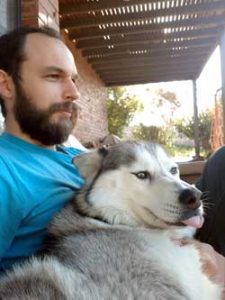How to Calm Down a Hyper Husky
20 min read
Why Do Huskies Howl?
8 min read
How to Train Your Husky to Stay
12 min read
Why Your Husky Eats Grass and How to Stop It
7 min read
Ultimate List of What Huskies Can and Can’t Eat
10 min read
Why Do Huskies Howl?
8 min read
Why Your Husky Eats Grass and How to Stop It
7 min read
Ultimate List of What Huskies Can and Can’t Eat
10 min read
How Much Sleep Do Huskies Need?
14 min read
How to Train Your Husky to Stay
12 min read
Fun Games to Play With Your Husky
16 min read
Are Huskies Easy to Train?
10 min read
Latest posts
All About Husky Eye Colors
One of their most beloved features, Huskies are known for their distinctive-looking almond-shaped eyes, which can be seen in a variety of colors. They are most commonly seen with either ice blue eyes or deep brown eyes, but sometimes even this varies. Some Huskies have...
7 min read
How to Calm Down a Hyper Husky
One of the most common behavioral problems that Husky owners tend to face is hyperactivity. It is common for Husky’s to get overexcited or overstimulated by their surroundings and start acting up. Once your Husky’s excitement level crosses a certain threshold, it can feel impossible...
20 min read
Why Do Huskies Howl?
One of the things that regularly reminds me that I own a husky is the howling. Huskies don’t tend to bark like other dog breeds, but they are quite vocal with howling and “talking”. Huskies howl as their main form of communication thanks to their...
8 min read
How to Train Your Husky to Stay
Training your Husky to stay is one of the most important commands to work on. In this guide, let’s look at how to train your Husky to stay and reinforce the command so your Husky will stay in any situation without fail. It’s well-known that...
12 min read
Why Your Husky Eats Grass and How to Stop It
If your Husky has been eating grass or dirt, you might be worried about this behavior. Should you be concerned? This isn’t normal behavior for a dog, is it? Eating grass is common with Huskies as well as most dog breeds and there are several reasons...
7 min read
Ultimate List of What Huskies Can and Can’t Eat
There are so many different dog food options that it can be overwhelming knowing what is good and bad for their health. Some people are happy to feed their Husky dog food from a can or package, but what if you want to supplement their...
10 min read
How to Clicker Train a Husky (Clicker Training Tips)
Clicker training is a powerful training method that can make training your Husky significantly easier. In this guide, you’ll learn everything you need to know about clicker training. You’ll learn how clicker training works, why it’s the preferred training method by countless professional dog trainers,...
14 min read
How Much Sleep Do Huskies Need?
Huskies are known for being one of the most energetic dog breeds. But they are just as well known for spending quite a bit of time sleeping. How much should your Husky be sleeping? What is considered normal? Why do they sleep for so long?...
14 min read
How to Stop a Husky From Digging Holes (Effective Methods)
A Husky digging holes is a common problem you will likely have to deal with at some stage. In this guide, I will explain why Huskies dig holes and go through some training methods and tips to stop your Husky from digging. This guide covers...
14 min read

Hi, I’m Aaron and this is Sasha. I’ve been lucky enough to grow up and live with huskies most of my life. This website is my way of sharing what I have learned over the years with other husky owners and people thinking of getting a husky.

